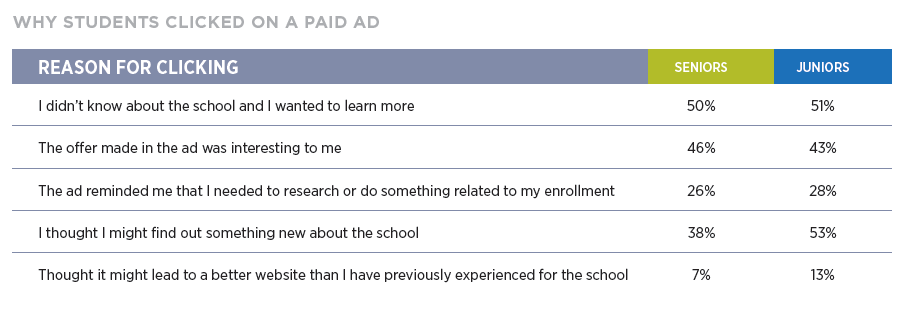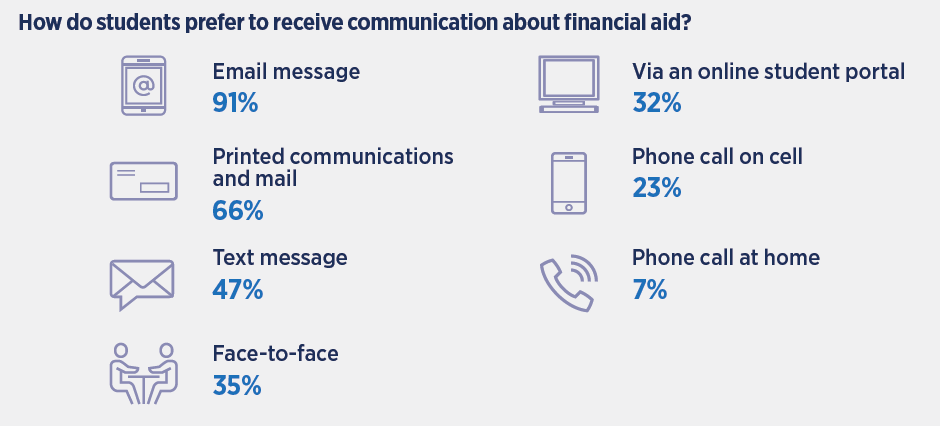enrollment
What We Learned About College Student Recruitment and Retention in 2018: 7 Key Findings From RNL
Over the course of the year, RNL published numerous reports on college student recruitment and retention. Each year, hundreds of colleges and universities work with Ruffalo Noel Levitz to develop enrollment management and student success strategies that will produce the results they want. We guide them with the leading data on enrollment trends, student research, and enrollment management practices, so they can have the greatest impact on college student recruitment and retention on their campuses.
In 2018, we conducted benchmark polls of higher education professionals, field research among active and prospective students, and reviewed data from millions of student records from our campus partners to produce our research findings, benchmarks, comparison data, and industry-leading insights.
As we head into 2019, here are 7 key insights from our research that can help guide your enrollment management and student success efforts.
1) Digital marketing was the most likely part of the admissions budget to increase in 2018.
Seven out of 10 private institutions and 61 percent of public institutions expected their digital marketing budgets to increase, by far the most common part of the admissions budget that enrollment managers expected to grow. At the same time, 14 percent of privates and 23 percent of publics expected traditional marketing allocations to decrease as well. Read more in College Admissions Budgets—How Are They Changing?
2) Engagement scoring with web tracking needs to grow in a web-first era of college student recruitment.
Prospective college students rate college websites as their most important resource for conducting their college searches. And for campuses that use behavior or engagement scoring with web tracking, more than 93 percent rate it effective in their recruitment efforts. However, only one-third of publics and just under half of private institutions use it, a major gap and a growing opportunity to gather invaluable behavioral insights on students. Find more recruitment insights in College Student Recruitment Practices: 5 Ways Institutions Need to Stop Doing the Same Old Thing.
3) Start talking about career qualifications with incoming freshmen.
In our 2018 National Freshman Motivations to Complete College Report, 67 percent of incoming freshmen said they wanted help with career qualifications. This finding shows the importance of student outcomes, as more students and families examine the value of a college education in an era of rising costs. See four other key needs in 5 Requests for Assistance From College Freshmen at the Beginning of Their First Year.
4) Paid digital ads are on the rise and a great way to engage students.
In our 2018 E-Expectations study, two-thirds of students said they had seen a digital ad online. More encouragingly, 41 percent of seniors and 45 percent of juniors have clicked on an ad.
These digital ads don’t just produce clicks, they also drive awareness, allow campuses to feature offers, and deliver more concise messaging. Read more in 5 Key Findings About College-Bound High School Students.
5) Keep your website photos “real.”
As part of the 2018 E-Expectations research, we asked college-bound high school students to review the kind of photos they typically see on a college website. Students ranked posed pictures of students lower than other types of photos. In an era of more spontaneous smartphone photos, the way photos are staged need to reflect the way students take photos in their daily lives. Find more insights into website photography in our post, What Prospective Students Say About College Website Photos.
6) Make students feel like your institution is their first choice…even if it is not.
Students who attend an institution that is their first choice are far more likely to be satisfied with their college experience. According to our National Student Satisfaction and Priorities Report, two-thirds of students who are at a four-year institution that is their first choice are satisfied with their college experience. Those numbers drop below 50 percent for second choice and down to just over 30 percent for third. This emphasizes the importance of surveying students about college choice, and also working to showcase the benefits of attending your institution so students see the value of being there even if it was not their first choice. Dive into more details with National Student Satisfaction Assessment: Understanding the Perceptions by Demographic Variables.
7) Multichannel communication is key for engaging students about college financing.
To engage students and their parents about financial aid and paying for college, institutions need to get those messages across multiple channels:
Reaching students and parents wherever they are—online, in their inbox, through the mail, or over the phone—will help ensure that you get their attention and start the crucial conversation about awarding and affordability. Read additional findings in 5 “Must Haves” for Engaging Students About College Financing.
What are your best strategies for college student recruitment and retention? Talk to our experts.

Talk to us today—request a complimentary consultation with one of our experts.

